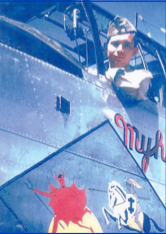This article explores what happened to the 91st Photo Squadron after World War I. After returning to the United States, the 91st continued in the aerial photography business as a major part of the 1st photo group, commanded by Col. Frank Northrup. The main purpose of this group was to perform a variety of assigned photographic missions and to develop improved aerial cameras, photographic techniques and the aircraft carrying such new equipment.
The number of photographic squadrons increased using the techniques developed by the 91st. One such squadron provided many of the pilots and crewmembers that took part in the Doolittle Raid on Japan in April of 1942. A number of photographic squadrons, including the 91st, were combined into the 311th Photo Wing.
During World War II, this wing operated worldwide. Concern about Nazi Germany’s preoccupation with South America, the 91st was assigned the mission of mapping the entire continent. I joined the 91st immediately after graduating from flying school and was assigned as a replacement pilot to the flight that was stationed in Colombia, Ecuador and Peru. Our planes were part of a small number of B-25 bombers that were converted to photographic use. Our planes, known as F-10s, were distinguished by the unusual nose configuration, which covered three major long-distance cameras. One camera shot its pictures vertically, and the other two shot left and right photos, giving us coverage from one horizon to the other.
We mapped the entire continent of South America, paying special attention to numerous locations that might be potential sites for submarine refueling operations. Our B-25 aircrafts were replaced by modified B-17s (F-9s) to give us the necessary range to complete our work. The training of our crews was oriented toward eventual B-29 reconnaissance aircraft. Shortly after the end of World War II, the squadron was converted to photo-B-29s, known as F-13s.
During the Korean War, the 91st and other photo squadrons specialized in reconnaissance appropriate to the war effort. In addition, considerable surveillance of Soviet Russia, both of its borders and interior was initiated. This activity was extremely secret as well as hazardous, and several aircraft were lost.
During the Cold War, aerial surveillance, both photographic and electronic, increased considerably. The electronic surveillance was concerned with identifying Russian radar sites and obtaining technical information about the capabilities of these sites. Several airplanes and crews were lost during this time, with many of the crews becoming prisoners of the Soviets. To this day, some of the crews are still missing in action, with remains never having been recovered. All planes of the 91st Squadron continued to carry the same legendary insignia of
the mounted knight chasing the Devil. Today, the 91st still exists (with the same
insignia) at Lackland Air Force Base, Texas. The squadron is now known as the 91st Network Warfare Squadron. Electronic intelligence has supplemented or replaced photoreconnaissance. Cyber war is now the intelligence concern.
My career took a different path after World War II. I left the intelligence business and participated in a wide range of other staff and command assignments. I still see and admire the continuing significance of my old outfit with its historic emblem.









